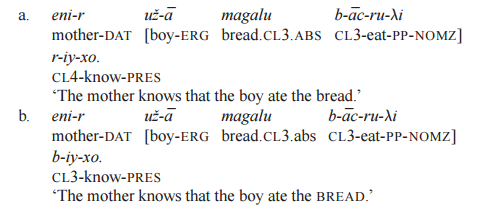The notion of complexity has been very prominent over the last decade, but there are many variations in defining complexity. From the explanations provided above, ‘complexity’ can be understood as objective or agent-related, but here we will look at more specifically structural complexity. Another explanation to ‘structural complexity’ apart from the one given above is that ‘the more distinction there are in a paradigm, the more complexity there is’ (Michaelis Susanne, 2010).
Hence, with regards to this structural complexity, do Creoles have simple or complex grammar? According to McWhorter (1998, 2001a), Creoles have the simplest grammars. This is attributed to three different reasons, as seen below:
- There is little or no inflectional morphology;
- There is no lexical or morphosyntactic tone;
- There is no non-transparent derivational morphology.
To show that Creoles have the simplest grammar, McWhorter (2001) compared Saramaccan, a Creole language spoken mainly by the ethnic Africans near the Saramacca and upper Suriname Rivers in Suriname. Saramacca is based on two major source languages: English and Portuguese.
McWhorter (2001) claims that Saramaccan has neither inflectional morphology nor free equivalents such as noun classifiers, as seen in below:

He also claims that the only marked sounds in the Saramaccan phonemic inventory are three pre-nasalized stops and two pre-velarized ones. There are also no uvulars, ejectives or labialized consonants. However, there are some minimal pair distinctions for tense and lax mid vowels ([e]/[E], [o]/[O]).
The next point that he brought up is Saramaccan has only two derivational suffixes; reduplication derives attributive adjectives and resultatives from transitive verbs:
mi lái dí gbóto ‘I loaded the boat’
dí láilái gbóto ‘the loaded boat’
dí gbóto dE´ láilái ‘the boat is loaded’
Reduplication also non-productively generates nouns from verbs (Bakker 1987: 21):
síbi ‘to sweep’
sísíbi ‘broom’
Saramaccan does mark, such as marking causativity with a serial verb construction. However, in most cases, Saramaccan has no overt derivational strategy.
These reasons given by McWhorter gives a possible reason in explaining why Creoles have the simplest grammars within the world’s languages. Moving on to Pidgin, McWhorter (1998) also claims that ‘during the pidgin phase all ‘ornamental’ marking has been lost’ and ‘Creoles are too young to have been able to develop complex features of older languages’.
How complex are Pidgins and Creoles compared to other languages?
To answer this question, Parkvall (2008) examines 53 WALS (The World Atlas of Linguistic Structures) features which reflect degrees of complexity, and codes them additionally in 29 pidgins and creoles, comparing the degree of complexity of these creoles with 153 non-creoles of the WALS sample. 18 main features were used (a subset of Parkvall’s 53 features) to measure complexity:


He also added some Pidgin and Creole languages in the WALS sample and then ranked the complexity of these languages:

Thus Parkvall (2008) concludes: “Typologically speaking, Creoles stand out from languages in general, and the most salient difference is that they present a lower structural complexity. This does not necessarily have any bearing on issues regarding psycholinguistic complexity, however, and certainly not on their expressive potential.”
Creole languages are therefore said to be less complex grammatically (less over-specification, structural elaboration and irregularity). The comparison of complexity found in the languages also shows that complexity of a language correlates with its age (Parkvall, 2010). Older languages have more time to develop “unnecessary” elaboration (McWhorter, 2010), thus making them more complex than Creoles and Pidgins.
Other researchers have debated on the simplicity of the Pidgin and Creole languages (Michaelis, 2010). However, McWhorter (2001) argues that not all Creoles fall further towards the “simplicity” pole, but there are substantial amount of languages that display the 3 criterias stated above, and most of them happen to be Creole languages.